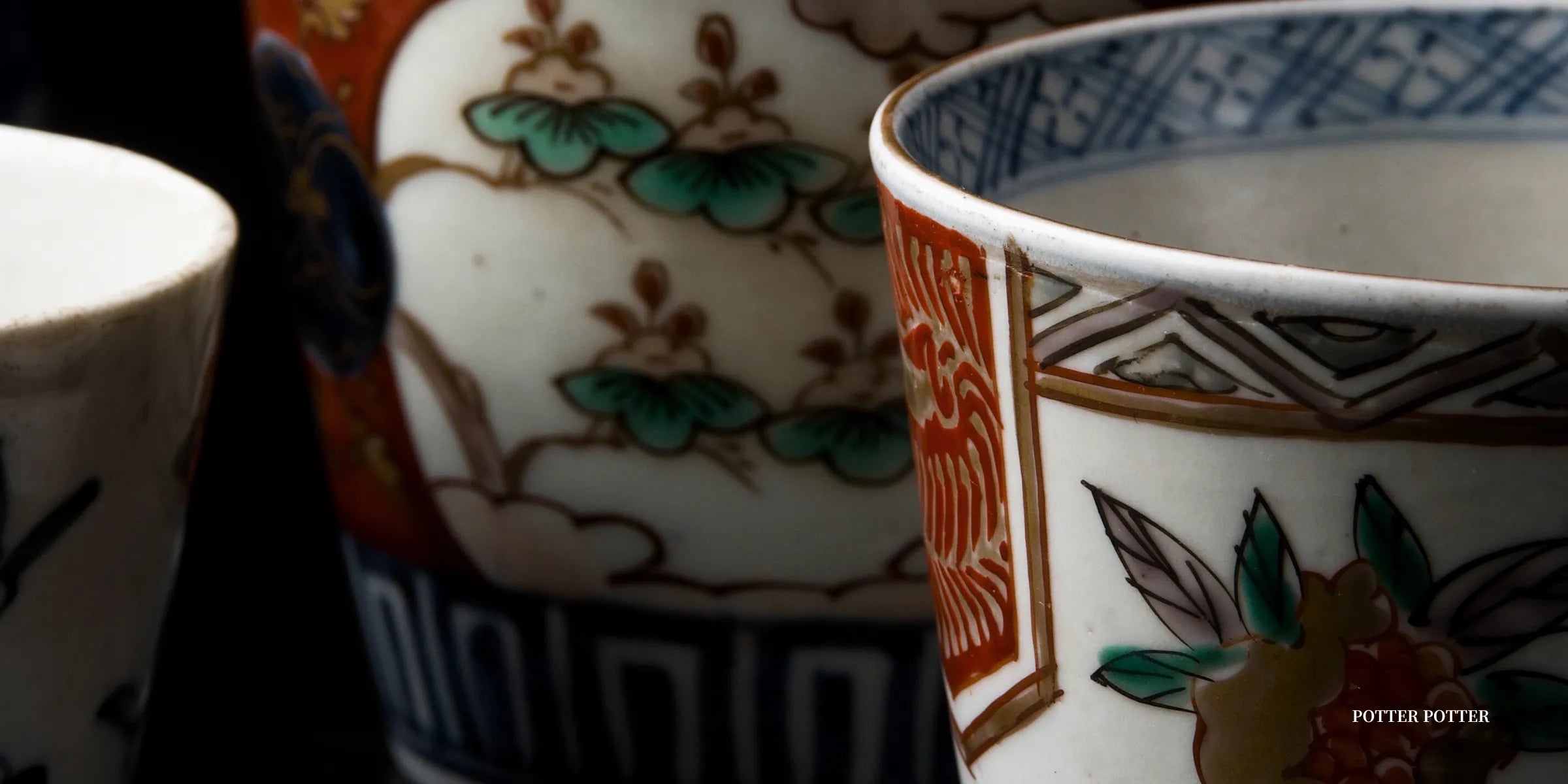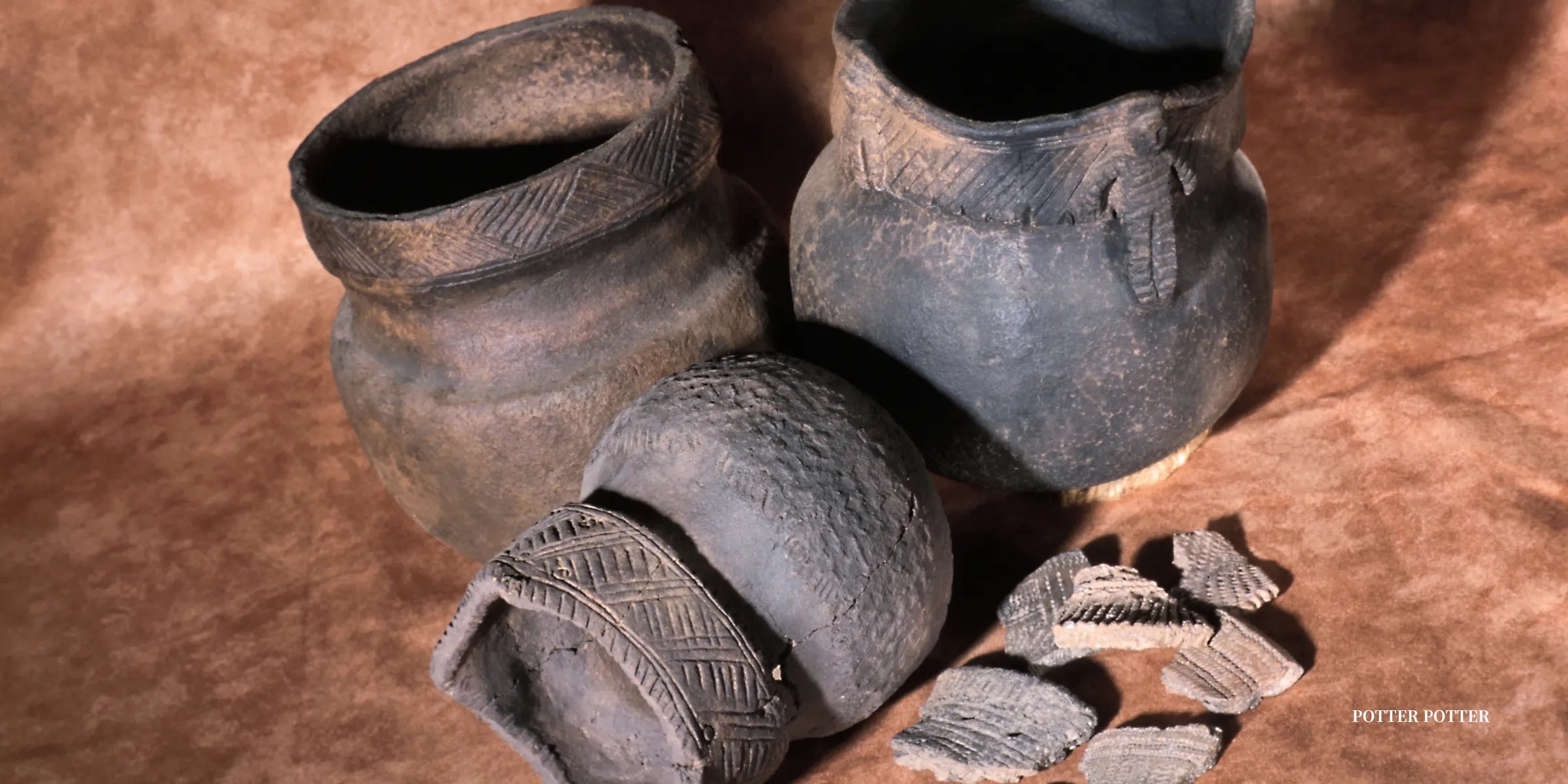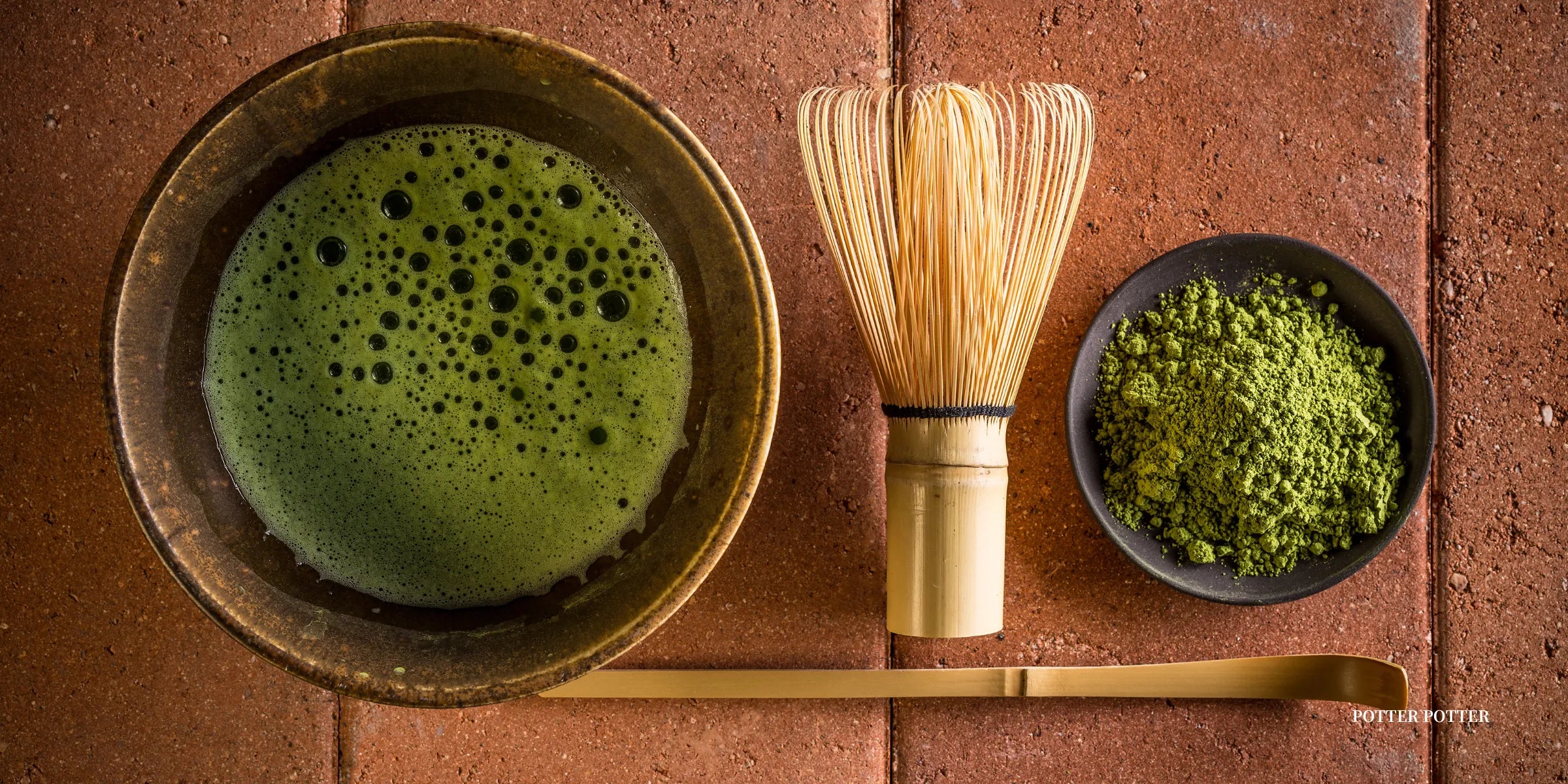
Arita and Imari Ware: Japan’s Timeless Ceramic Treasures
What makes Arita and Imari ware iconic in Japanese ceramic history? Originating in Saga Prefecture, these porcelains are renowned for their exquisite designs, craftsmanship, and historical significance. They embody a perfect blend of tradition and innovation, influencing global ceramic art and symbolizing Japan’s rich artistic heritage.

|
Table of Contents |
Arita Ware: The Birthplace of Japanese Porcelain Craftsmanship
Arita ware, or Arita Yaki (有田焼), marks the inception of Japanese porcelain craftsmanship. The story begins in the early 17th century when Korean potters were brought to Japan during Toyotomi Hideyoshi’s invasions of Korea. Among them was Ri Sampei, a potter credited with discovering kaolin clay in the Izumiyama area of Arita around 1616. This discovery was transformative, as kaolin clay is essential for producing high-quality porcelain. Prior to this, Japan was known for stoneware and pottery, but the production of true porcelain was considered impossible.
The early pieces of Arita ware were heavily influenced by Chinese and Korean ceramics, particularly in their blue-and-white designs. Known as “sometsuke” (染付), these pieces were characterized by delicate patterns painted in cobalt blue under a clear glaze. Arita ware gained fame for its translucent white body, intricate designs, and remarkable durability. Its thin yet robust structure was achieved through high-temperature firing, giving it a clear, resonant sound when tapped—a hallmark of quality.
As Arita ware evolved, it introduced a new decorative style known as “akae” (赤絵) or overglaze enamels. Akae featured vibrant colors like red, green, yellow, and blue painted over the glaze, resulting in vivid and ornate designs. This technique expanded the artistic possibilities for Arita ware, allowing potters to create more intricate and colorful pieces. The combination of sometsuke’s elegant simplicity and akae’s decorative richness became defining characteristics of Arita ware, showcasing the duality of Japanese aesthetic values.
Arita Yaki quickly gained popularity among Japan’s elite, admired not just for its beauty but also for its functional qualities. It was valued both as a utilitarian object and as a work of art, with its designs reflecting the cultural ethos of the Edo period. The artistry and craftsmanship of Arita ware made it a symbol of sophistication and cultural heritage in Japan.
Imari Ware: The Global Face of Japanese Ceramics
While Arita was the birthplace of Japanese porcelain, Imari ware, or Imari Yaki, became the name known worldwide. Imari Yaki refers to the porcelain exported from Japan to Europe and other parts of Asia through the port of Imari in Saga Prefecture. During the Edo period, Imari Port served as a crucial shipping hub for Arita, Kakiemon, and Nabeshima ware, leading to the global association of “Imari” with these exquisite wares.
Imari ware primarily encompasses two major styles: “Ko-Imari” (古伊万里) and “Kakiemon.” Ko-Imari, or “Old Imari,” refers to the early export pieces from the 17th and 18th centuries. These porcelains were known for their luxurious and intricate designs, often featuring a vibrant palette of deep blues, reds, greens, and gold. Ko-Imari pieces frequently combined traditional Japanese motifs with influences from Chinese ceramics, resulting in richly decorated wares that captivated foreign markets. The use of gold accents in Ko-Imari added a sense of luxury and exclusivity, making them highly sought-after among European nobility and collectors. Nabeshima ware, produced in the same region, also played a role in this prestige, being recognized for its elite craftsmanship and complex designs.
Kakiemon ware (柿右衛門), named after the Kakiemon family of potters in Arita, emerged as a refined and elegant style within Imari ware. Developed in the mid-17th century, Kakiemon ware is distinguished by its milky white, translucent glaze and delicate overglaze enamels in soft colors. Kakiemon designs often depict natural motifs such as flowers, birds, and landscapes, rendered with a sense of balance and harmony. This style exemplifies the Japanese aesthetic principle of “wabi-sabi,” which celebrates simplicity and the beauty of imperfection. Kakiemon ware became immensely popular in Europe, significantly influencing European porcelain manufacturing, especially at the Meissen factory in Germany. The Kakiemon technique required great skill, especially in applying the overglaze colors delicately and with precision, resulting in a style that was both understated and sophisticated.
Nabeshima ware (鍋島) is another key element in the Imari ware tradition, known for its exceptional quality and exclusivity. Produced under the direct patronage of the Nabeshima clan at their kilns in Okawachiyama, Nabeshima ware was initially not for commercial sale but was instead used as prestigious gifts for the shogunate and high-ranking samurai families. This exclusivity set Nabeshima ware apart from other types of Imari ware. Developed in the late 17th century, Nabeshima ware was characterized by its meticulous craftsmanship and detailed decoration. It featured intricate hand-painted designs that combined underglaze blue with overglaze enamels in a controlled and harmonious manner. The motifs often included highly stylized representations of natural elements like flowers, grasses, and animals, with a particular emphasis on symmetry and elegance. One notable feature of Nabeshima ware is the use of a plain white border around the edge of plates and dishes, framing the central design and enhancing its visual impact.
The production of Nabeshima ware was closely supervised to ensure the highest quality standards. The artisans at the Nabeshima kilns were masters of their craft, and the production process involved several stages, including shaping, glazing, painting, and multiple firings. The final result was porcelain of such refinement and precision that it became known as some of the finest ceramics ever produced in Japan. Nabeshima ware was often admired for its restrained use of color and the subtlety of its designs, which contrasted with the more vibrant and bold patterns typical of Ko-Imari. Its elite status, limited production, and association with the ruling class contributed to its mystique and desirability. Today, Nabeshima ware is highly valued by collectors and is considered a pinnacle of Japanese ceramic artistry.
The production of Imari ware, including Nabeshima and Kakiemon, was not just an artistic endeavor but also a technical feat. It involved multiple intricate processes, including clay preparation, shaping, glazing, hand-painting, and repeated firings. The resulting pieces were both aesthetically pleasing and durable, making Imari ware a prized commodity. European aristocrats and royalty were particularly enamored with Imari ware, which they displayed as symbols of wealth and cultural refinement. Its exotic designs, vibrant colors, and the inclusion of prestigious works like Nabeshima made Imari ware a status symbol, gracing the halls of European palaces and estates.
The international success of Imari ware was largely facilitated by the Dutch East India Company, which had exclusive trading rights with Japan during the period of national isolation (Sakoku). The Dutch recognized the high demand for Japanese porcelain in Europe and exported large quantities, contributing to Imari ware’s global popularity. The influence of Imari ware was so profound that European ceramic factories, including Meissen and Delft, began producing their own versions inspired directly by Japanese designs, further cementing the legacy of Imari ware in the world of ceramics.
The Evolution and Modern Legacy of Arita and Imari Ware
The history of Arita and Imari ware is one of adaptation, innovation, and resilience. In the mid-17th century, China, the world’s dominant porcelain producer, experienced political upheaval, causing a significant reduction in its porcelain exports. This created an opportunity for Japanese porcelain to fill the gap in the international market. Arita potters seized this moment, expanding production and refining their techniques to meet the growing demand. Imari ware quickly became a dominant force in European markets, admired for its intricate designs and superior craftsmanship.
However, by the 18th century, the global porcelain market had shifted again. China resumed its porcelain exports, and European manufacturers, like Meissen, began producing their own porcelain, reducing the reliance on Japanese exports. In response, Arita potters turned their focus inward, adapting their production to cater to domestic tastes. They created simpler, more functional designs that maintained Arita’s high quality and artistic integrity. This transition marked the integration of Arita ware into Japanese daily life, where it became a cherished part of the culture.
The Meiji Restoration in the late 19th century brought further changes to Arita ware. Japan opened to Western influences, and Arita potters began incorporating Western design elements into their work. They started producing Western-style tableware such as plates, cups, and vases to cater to both domestic and international markets. The fusion of Western styles with traditional Japanese techniques led to a unique evolution in Arita ware, broadening its appeal and securing its place in the modern world.
Today, Arita and Imari ware continue to thrive as symbols of Japanese craftsmanship. In 2016, Arita celebrated its 400th anniversary, highlighting the enduring legacy of its porcelain industry. Modern Arita ware often blends traditional methods with contemporary design, resulting in a diverse range of styles that appeal to collectors, art enthusiasts, and everyday users. Collaborations with international artists and designers have further enriched Arita ware, ensuring its relevance in the global market.
The legacy of Arita and Imari ware extends far beyond Japan. Their historical and artistic significance has made them treasured collectibles and cultural artifacts. Museums and private collections around the world showcase Arita and Imari ware, celebrating their artistry and contribution to global ceramic traditions. Contemporary potters and artists continue to draw inspiration from Arita and Imari designs, ensuring that the tradition of Japanese porcelain remains vibrant and evolving.
The End.
Arita and Imari ware are more than just ceramics; they are embodiments of Japan’s cultural heritage and artistic excellence. From their origins in Saga Prefecture to their rise as international icons, these porcelains tell a story of ingenuity, adaptation, and timeless beauty. Referred to as Japan’s “White Gold,” Arita and Imari ware have shaped the perception of Japanese craftsmanship around the world.
For those who appreciate fine ceramics, Arita and Imari ware offer a glimpse into the artistry and traditions that have defined Japanese culture for over four centuries. These porcelains remain symbols of elegance, durability, and artistic mastery. Whether displayed in museums, used in daily life, or cherished as collectible art, Arita and Imari wares continue to captivate with their exquisite designs and cultural significance.
Exploring Arita and Imari porcelain is not just about admiring beautiful objects; it is about connecting with a legacy of craftsmanship that has endured the test of time. They represent a unique blend of tradition and innovation, a testament to Japan’s rich ceramic heritage. Arita and Imari ware remain enduring treasures, embodying the spirit and artistry of Japan’s “White Gold.”

